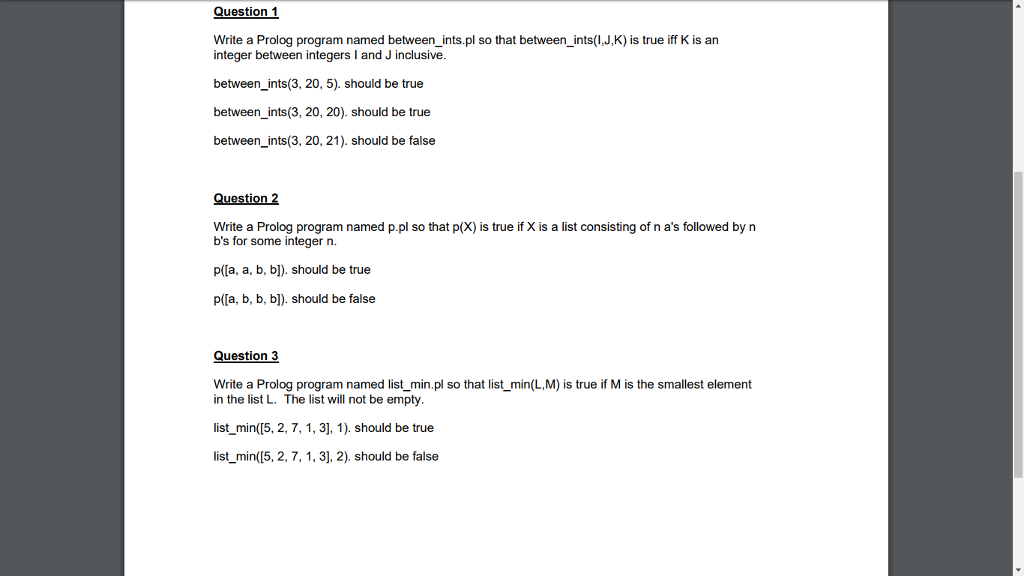

This technique is called failure driven loop. Write(Mn), write(' match with '), write(Fn), nl, To get proper formatting of the output, use the following program. While SWI-Prolog extends this to Unicode (see section 2.16.1.9 ), transferring atoms holding non-ASCII text to other Prolog implementations may cause problems. To achieve this, you just need to force backtracking by adding false as the last clause. The Prolog standard only describes non-quoted atom syntax containing ASCII characters.

Now by pressing you get the 3 matches without any output true in between.īut what you likely want is that the program does the backtracking. You should remove the last clause match(Mn1,Fn1) in go. You surely do not want to have this behavior. The fourth time match(Mn1,Fn1) fails and by backtracking you come back to the first clause match(Mn,Fn) that matches, the match is output, etc. This clause succeeds three times and binds the variables Mn1,Fn1 but then only true is output, because you do not write() after that clause. In particular graphic outputs are possible. This is because the last clause in go is match(Mn1,Fn1). The SWI-Prolog-Editor also supports the XPCE-System, with which you can write Windows-Programs.

But you also see that you are getting unnecessary outputs true. have no free variables) when attempting to satisfy this goal.You get all your matches if you force backtracking, usually by entering (e.g. Not-equals(X, Y) should succeed if X is not equal to Y, and fail if it is X and Y should be bound to ground expressions (i.e. Not-equals(X, Y) :- equals(X, Y), !, fail. An example is the definition of not-equals: equals(X, X). If, however, the proof of R fails, rather than backtrack and try to re-prove H, the presence of the cut causes the goal g to fail immediately this occurs even if there are further clauses that might apply to g. If the proof of R succeeds, then g is proven in this case, the cut has no part to play. Suppose this clause is chosen to satisfy a goal g with which G unifies. Specifically, the cut is written as an exclamation mark (!) occurring as a goal in the right-hand side of a clause such as: G :- H, !, R. The cut is a way of giving the programmer additional control over the computation by allowing him to indicate places where backtracking is impermissible. Reading Samuel Kamin's book on chapter 8, prolog, I found this solution that also fits here and explains how to use the cut:


 0 kommentar(er)
0 kommentar(er)
